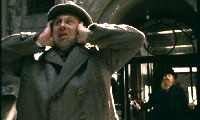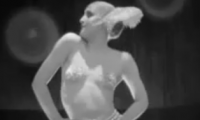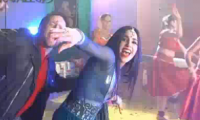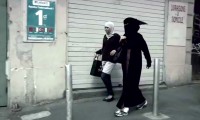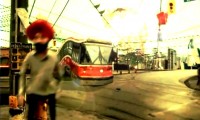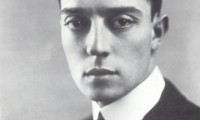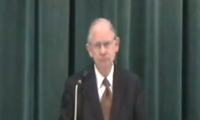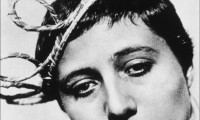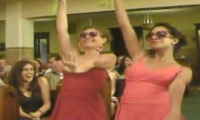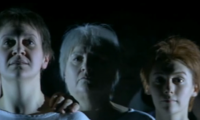railroad33, “Kyle Railroad” (Kansas to Colorado)
Evoke an emotion to match the power of a moving train. How do you do that? Maybe it’s an ambition too big for American movies, wherein too often it feels like the first rule for an actor is to be cool. Maybe it’s because the Method does not instruct you to match the power of a locomotive. Or maybe it’s just because our poor language, once the language of Shakespeare, now gets droned and compartmentalized by serious business-minded people all over the world.
Here’s a pop quiz though: If you want to make your American movie as relentless as the train that moves across its landscape, what do you do?
Well, you could dub it into another language for a start.
Andrei Konchalovsky, “Runaway Train” (1985)
Are these not great performances? Eric Roberts with snot all over his face? Jon Voight, finally getting to show the world in 1985 what a glorious asshole he is? Rebecca DeMornay, playing a doe-eyed innocent too soon after “Risky Business” for one concupiscent teen to properly appreciate? A Russian director of an American movie with a script by the legendary Japanese director Akira Kurosawa (himself the primo director of the greatest, most outsized actor of the 20th Century, Toshiro Mifune): Language becomes secondary in a film like this.
Dubbing though. What a cheat. What a cheap shot. I’m so sorry. You can’t even understand what they’re saying. (Don’t be surprised: Even the English sounds dubbed.) Still, the scene feels elemental. And look at that: We’ve already got our American movie (full disclosure: it’s one of my favourites). But something doesn’t seem quite right about it. It feels too foreign or something.
So what else could you do? Well, really, maybe the easiest thing would be to give up and move your movie away from America. And if you want your language to be as large as your train then set it to music and sing it.
Mani Ratnam, “Dil Se” (1998); A.R. Rahman, “Chhaiyya Chhaiyya“
Language is secondary in a movie like this too. Or maybe not, since I don’t understand what they’re saying. But why is it so stirring to see singing and dancing atop a moving train? Could it be because it shows how we really move on the surface of the earth? Getting up to all our business of courtship while all the time whirling through space at 108,000 km/hr? Not to mention the fragility of those soft forms clinging to that rolling satellite of ore. They’re like rain dancing on the window of a moving car.
Still, this wouldn’t be right for our American train movie. It’s way too big for a non-CGI project. It’s like an asteroid. There’s such force at work here, Bruce Willis might have to quietly step in and blow it up.
So what would you do? Well, you could keep your Indian setting, bring your Americans there, and throw in a cobra.
Wes Anderson, “The Darjeeling Limited: Behind The Scenes” (2007)
Or, if you’re Lars Von Trier and you want to make your American movie, you could keep the singing and restore the English, but cast second-languagers and slow down the train a bit.
Lars Von Trier, “Dancer In The Dark: “I’ve Seen It All” (2000)
I mean, after all, English is a great language for trains. More train songs have been written in English than any other language, no? The straw men say there are no more epics, but try singing this list back to back. It would take a Homer. Take that, straw men. Take that, Shakespeare.
But you still haven’t answered the pop quiz. You’ve got an outsize American/ international movie called “Runaway Train” and you want to make it more palatable for a normal, business-minded, English-speaking American audience. You want an American movie with American actors speaking American lines in an American setting. What do you do?
What do you do?
Well for one thing, you hire a Canadian to write it. And get rid of that fucking train. Who wants a vehicle with an alternate energy source anyway? That’s just boring.
Jan de Bont, “Speed: Trailer” (Writer: Graham Yost, 1994)
Conclusion: Railroads are not to be trusted in America. They’re Stalinist. Always telling you where to go. Further, anyone who pals around with train cars should be exposed as a Socialist entity as well. Like, for example, the English language itself. Or perhaps not the language as a whole but certainly its complex usage. And here’s the proof, straight from that hotbed of American Communism: “Sesame Street.”
Bob Dorough, “Conjunction Junction” (“Schoolhouse Rock,” 1973)
No wonder Obama wields the language so well. Looks like he’s going to grow that Hitler mustache for real in no time.
You betcha!
– Sean Dixon
